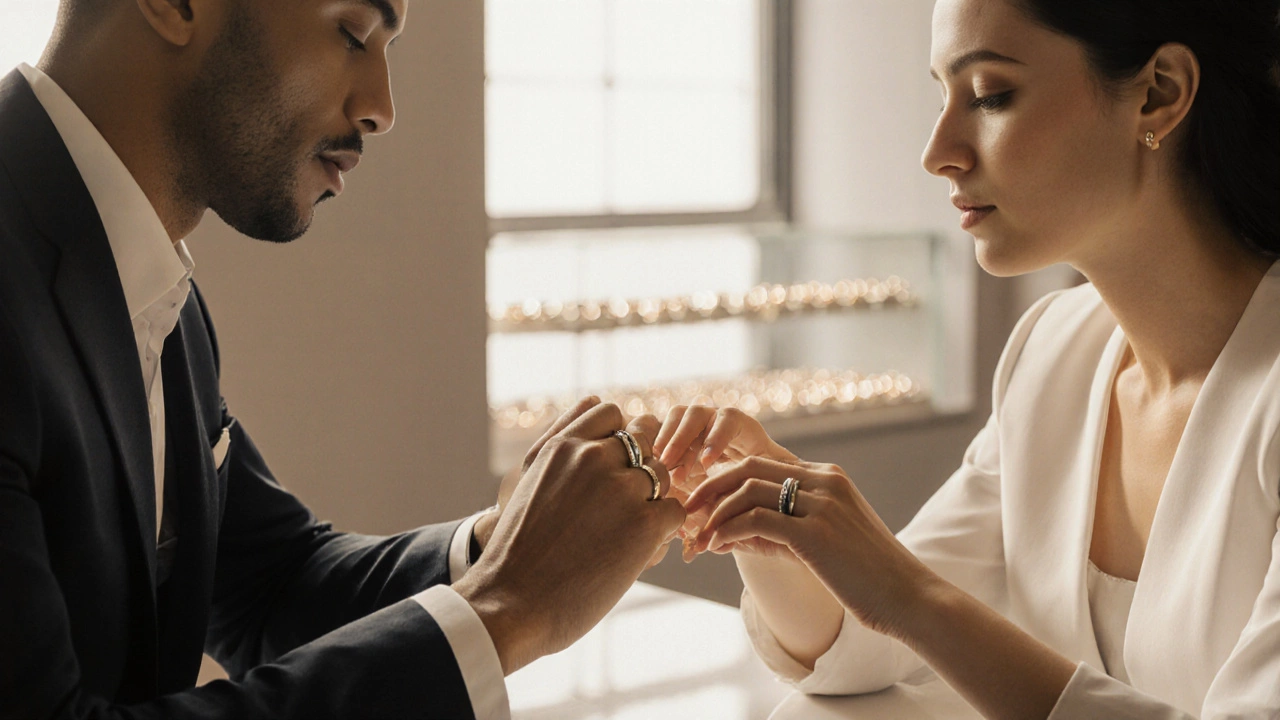Wedding Band Tradition: What It Means and How It’s Done Today
When you think of a wedding band tradition, the lifelong symbol of commitment exchanged between partners during a marriage ceremony. Also known as marriage ring ritual, it’s one of the most personal moments in any wedding. But it’s not just about putting a ring on a finger. It’s about timing, meaning, and the unspoken rules that still shape how couples do it—even when they think they’re breaking them.
Most people assume the wedding band is exchanged right after the vows, and yes, that’s still the most common order. But if you’ve ever watched a wedding video and noticed someone swap rings before the "I do," you’re not imagining it. The ring exchange timing, the specific moment during the ceremony when partners put on their wedding bands can vary based on culture, religion, or just personal preference. Some couples choose to exchange rings before the vows to symbolize their promise comes first. Others follow the classic path because it feels right. And then there are those who forget the rings entirely—turning a planned ritual into a funny, human moment everyone remembers.
The wedding ceremony customs, the set of practices and rituals that structure a wedding day, often passed down through generations around wedding bands go deeper than just when they’re worn. Why do we wear them on the fourth finger of the left hand? Because ancient Romans believed a vein there led straight to the heart—the vena amoris. It’s not true anatomically, but the idea stuck. And today, that same finger still holds the weight of centuries of meaning, even for couples who don’t believe in fate or symbolism. The band isn’t just metal—it’s a quiet promise, worn every day.
What you’ll find below isn’t just a list of articles. It’s a real look at how people actually handle this tradition today. Some are asking whether the groom should wear a black suit, others are wondering if the engagement ring gets returned after divorce. One post breaks down why 14K gold might be better than 18K for daily wear. Another explains why the garter pull still happens—and why it’s not as weird as it sounds. These aren’t random topics. They’re all part of the same conversation: how do we honor old rituals while making them feel like ours?
Whether you’re planning a simple courthouse wedding or a grand ballroom event, the wedding band tradition still matters. Not because you have to follow it, but because it gives you something to hold onto—or let go of—with intention. The posts here will show you how real couples are doing it—what they kept, what they changed, and what they didn’t even know they were breaking until they did.

Who Buys the Wedding Rings When Getting Married?
Who buys wedding rings? Traditions are changing. Today, couples are sharing the cost, choosing styles together, and ditching outdated rules. Here’s how real couples are deciding now.